Weak grip, slouched posture, and stiff shoulders can stall your progress in the gym. The solution? Dead hangs.
This simple bar-hanging move may look easy, but it delivers serious results. In just two weeks, it can strengthen your grip, decompress your spine, and improve your posture, all while engaging your core and upper body.
In this guide, we’ll break down the benefits, teach you proper form, and share variations to keep you challenged.
It’s time to hang your way to a stronger, healthier you.
What Is Dead Hang?
A "dead hang" is a hanging exercise that you can do at home. For this, you have to hang from a bar with your arms extended and your feet off the ground.
It might not sound like much, but dead hangs are a great way to build upper body strength.
Unlike pull-ups, in which you have to lift your body, in dead hangs, you just have to hold and balance your body weight under the bar.
When hanging from a bar, your body is forced to support your entire weight. It puts a lot of strain on your arms and shoulders, which helps build muscle.
There are two main types of dead hangs: passive and active.
Difference Between Passive and Active Dead Hangs
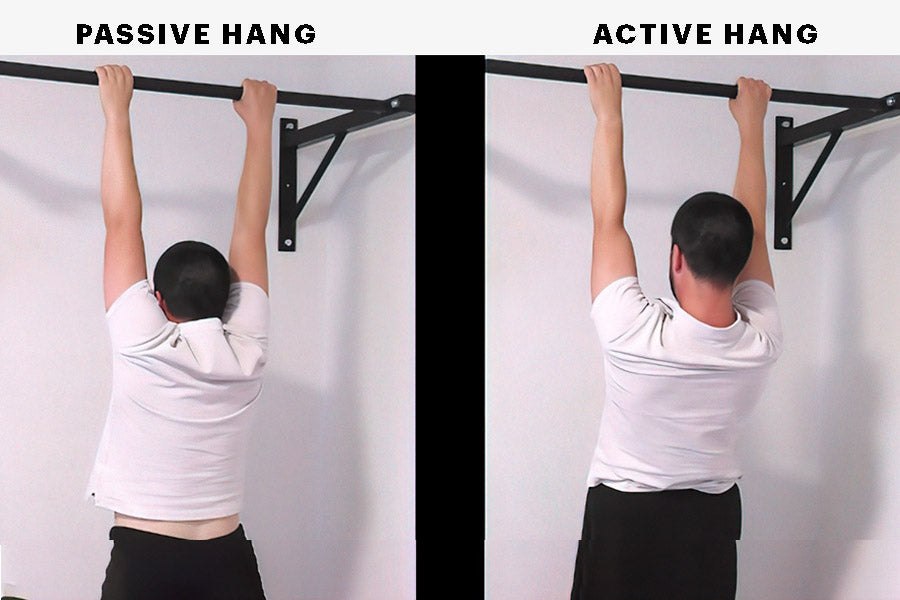
Passive hangs are performed with raised shoulders that relax your body, decompress your shoulders, and expand your spine (traction).
Active hangs regulate the scapular movements in three separate directions (depression, protraction, and retraction) using shoulder musculature.
Here's a quick breakdown of the differences between the two:
|
Feature |
Passive Hang |
Active Hang |
|
Position |
Relaxed Grip |
Engaged Grip |
|
Muscles Work |
Hands, forearms, and shoulder muscles |
Hands, forearms, core, lats, and shoulder muscles |
|
Purpose |
Stretching and grip improvement |
Upper body strength and stability |
|
Difficulty Level |
Easy: Requires less strength |
Difficult: Requires maintaining muscle tension |
|
Use in |
Stretching and mobility workout |
Strength training |
What Muscles Do Dead Hangs Work?
Dead hangs engage multiple upper-body muscles, making them an excellent functional exercise. Your forearms and hands work hard to maintain grip strength, while your shoulders and lats stabilize and support your body weight. The traps, rhomboids, and upper back muscles assist in maintaining posture during the hang.
Additionally, your core, including the rectus abdominis and obliques, contracts isometrically to keep your body steady. Even your chest muscles play a minor role in stabilizing your position. By targeting these key muscle groups, dead hangs improve strength, stability, and endurance, making them a simple yet powerful addition to any workout routine.
Dead Hang Benefits
The dead hang provides a wide range of benefits to your body by building strength and endurance in the muscle groups.
Improve Grip Strength with Dead Hangs
Grip strength improves with dead hangs when we hold our body weight for a long period of time.
It is a grip-strengthening exercise. The longer we hold our weight, the stronger our grip gets.
A firm grip is necessary not only for holding your phone, but according to a study, having insufficient grip strength may increase your risk of reduced mobility as you age.
Spinal Decompression by Dead Hangs
The most popular question related to dead hangs is: do dead hangs decompress the spine?
The answer is Yes!
When spinal decompression is performed, a "dead hang" opens up the space between the vertebrae, allowing the bulging disc to move back into place.
This releases pressure from the surrounding soft tissues and nerves.
Upper Body Stretch from Dead Hang
A dead hang is a hanging exercise that provides a deep stretch to your entire back, including your lats, traps, and rhomboids, as well as your shoulder and arm muscles.
When muscles don't receive adequate stretching attention, they tend to shorten and become overactive, resulting in muscle imbalances and injury.
Better Posture through Dead Hangs
Your posture can suffer from tight back muscles. Thus, the better stretched they are, the better your posture will be.
Dead hangs can help by decompressing your spine and restoring the space lost between your back's bones, joints, and discs.
As a result, they help reduce lower back strain, enhance posture, and prevent injuries.
Strengthen Core by Dead Hang
When you perform a dead hang, your core muscles engage in an isometric contraction to stabilize your body.
You don’t move your body, but your core muscles constantly engage during the workout, and when you breathe deeply, your deeper core muscles engage as well, such as the diaphragm and transverse abdominis.
How to Perform a Dead Hang?

The dead hang is a simple but effective hanging bar workout that can be performed almost anywhere using a hanging bar. You can use palm grips for extra support. Follow these steps to perform a dead hang:
- Use a step or bench to reach the bar easily
- Hold the pull-up bar with an overhand grip
- Lift your feet off the step or bench and hang from the pull-up bar
- Keep your arms straight and at least shoulder-width apart
- If you are a beginner, hang for a few seconds, then increase the time gradually
- Step back onto the bench or step before releasing your grip
- Repeat up to three times
Here’s a quick guide on how long you should hang based on your fitness level:
| Category | Beginner | Intermediate | Advanced |
|---|---|---|---|
| Passive Hang | 20–30 seconds | 80–90 seconds | 2–5 minutes |
| Active Hang | 10–15 seconds | 1 minute | 2–5 minutes (very challenging) |
| Progression | Start small and increase weekly | Maintain time, add sets | Increase total hang time gradually |
| Pro Tip | Focus on proper form | Add grip variations | Incorporate weighted hangs |
Warning: Even advanced athletes may find it hard to hold an active dead hang for several minutes. Increase time gradually and maintain proper form.
The Best of Dead Hang Variations
Here are the most effective dead hang variations. Each one has unique benefits, so you can pick the one that fits your strength and goals.
1. Underhand Dead Hang
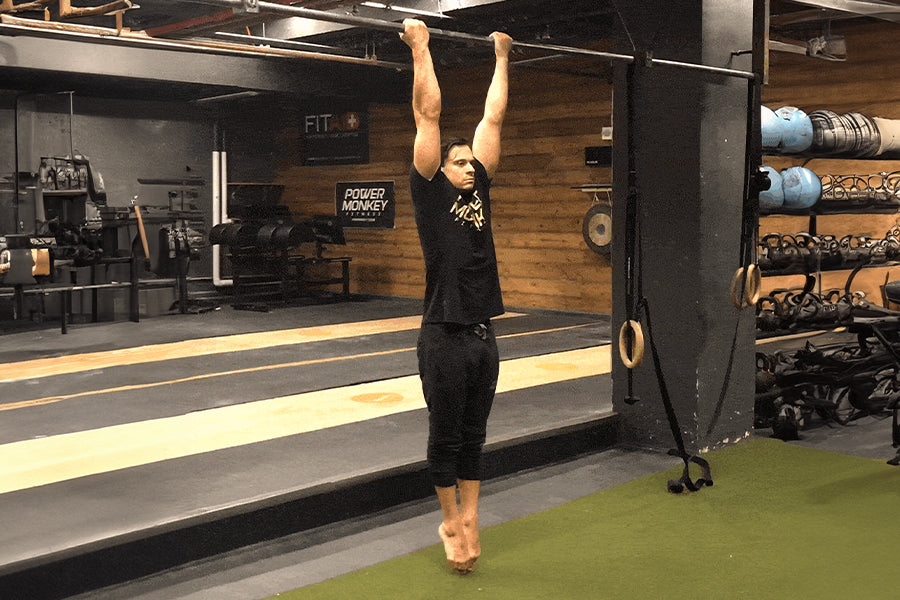
The underhand dead hang focuses on your biceps and forearms by using a palms-facing-you grip. This variation places less stress on the shoulders, making it beginner-friendly. It’s ideal if you want to improve arm strength while also building grip endurance.
Unlike the overhand version, it shifts more tension to your arms rather than your lats. It’s a great option for lifters who want better pull-up strength. Over time, it also improves elbow stability and forearm muscle definition.
How to Perform Underhand Dead Hang:
- Grab the bar with your palms facing you.
- Hang with your arms fully extended and feet off the ground.
- Keep your shoulders relaxed and core tight.
- Hold for the desired time without swinging.
- Step down safely and repeat.
2. Overhand Dead Hang
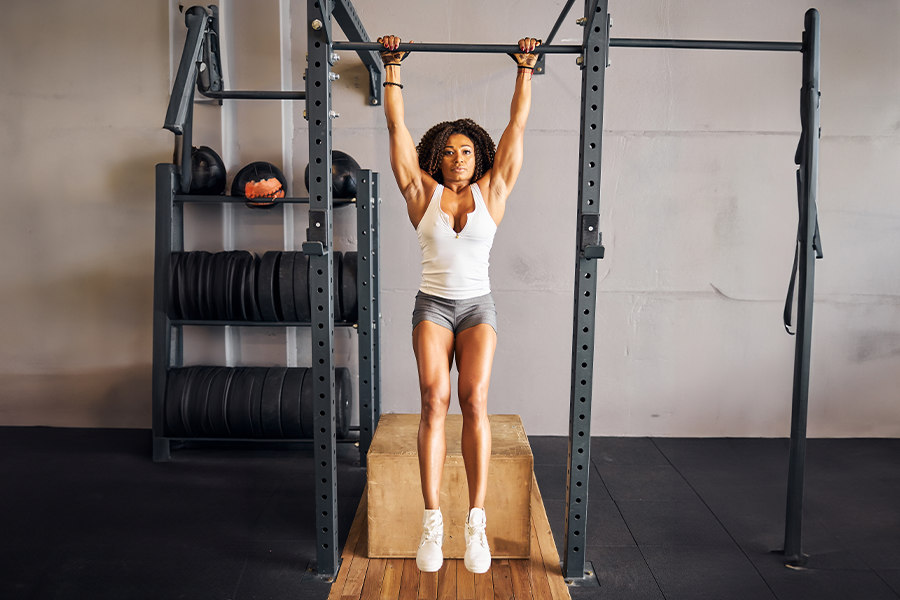
The overhand dead hang is the classic variation where your palms face away from you. It primarily targets your lats, shoulders, and grip strength. This is the go-to variation for anyone preparing for pull-ups or other upper-body pulling movements.
This version is more demanding on the upper back compared to the underhand grip. It improves shoulder mobility while reinforcing a stronger pulling foundation. Over time, it also reduces the risk of shoulder impingement.
How to Perform Overhand Dead Hang:
- Grab the bar with palms facing away from you.
- Hang with arms extended and feet lifted.
- Engage your lats slightly for stability.
- Keep your body still and avoid swinging.
- Hold for time, then release safely.
3. Neutral Dead Hang
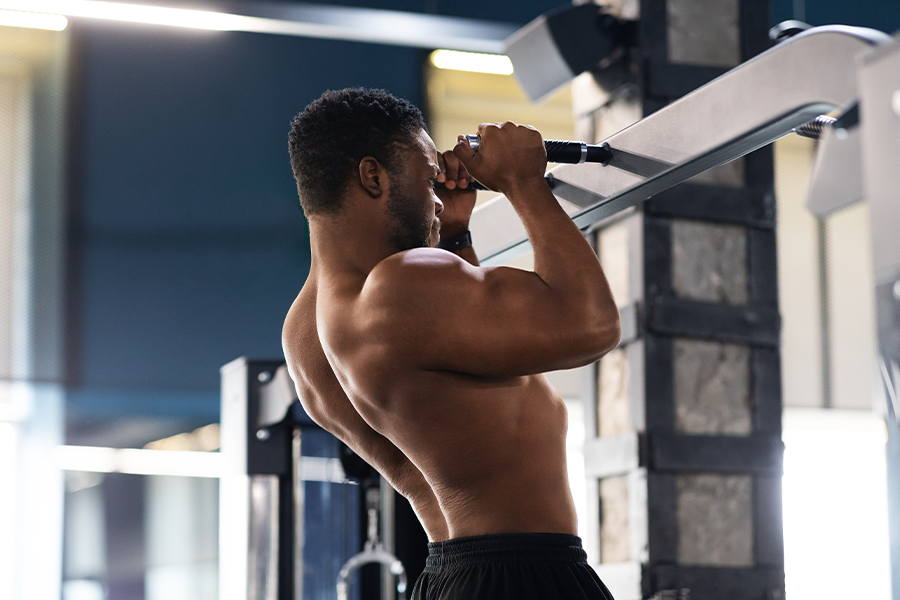
The neutral grip dead hang has your palms facing each other. This position is easier on the shoulders and elbows while still challenging your grip. It’s ideal for those recovering from shoulder strain or anyone who wants a joint-friendly variation.
Unlike overhand or underhand grips, this version engages the forearms and stabilizing muscles without excessive strain. It helps improve shoulder alignment and is perfect for building a solid foundation for pull-ups. It also works well for maintaining healthy shoulder joints.
How to Perform Neutral Dead Hang:
- Grab the handles or bar with palms facing each other.
- Hang with arms straight and feet off the floor.
- Keep shoulders packed and stable.
- Engage core muscles for better control.
- Hold as long as possible, then step down.
4. Single Arm Dead Hang
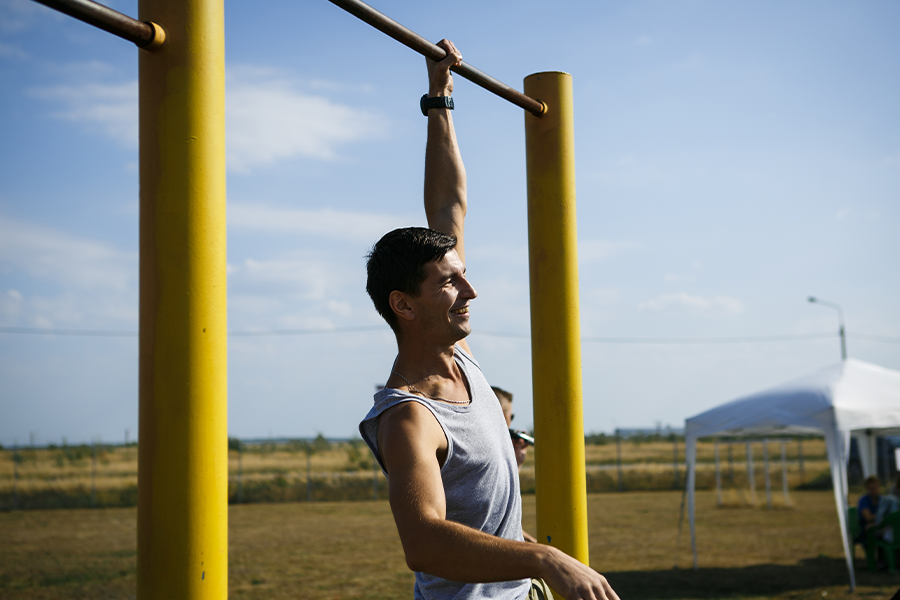
The single-arm dead hang is an advanced variation that tests raw grip strength and shoulder stability. By supporting your weight with one arm, you develop serious unilateral strength. This also challenges your core as it fights to keep your body balanced.
This variation is significantly harder than two-arm hangs and should be approached gradually. It helps strengthen each side independently, fixing imbalances. It’s also an excellent way to build grip endurance for climbing or heavy lifting.
How to Perform Single Arm Dead Hang:
- Grab the bar with one hand and engage your grip fully.
- Lift your feet off the ground and keep your body stable.
- Engage your core to prevent rotation.
- Hold for a short time, then switch arms.
- Progressively increase duration.
5. Towel Grip Dead Hang
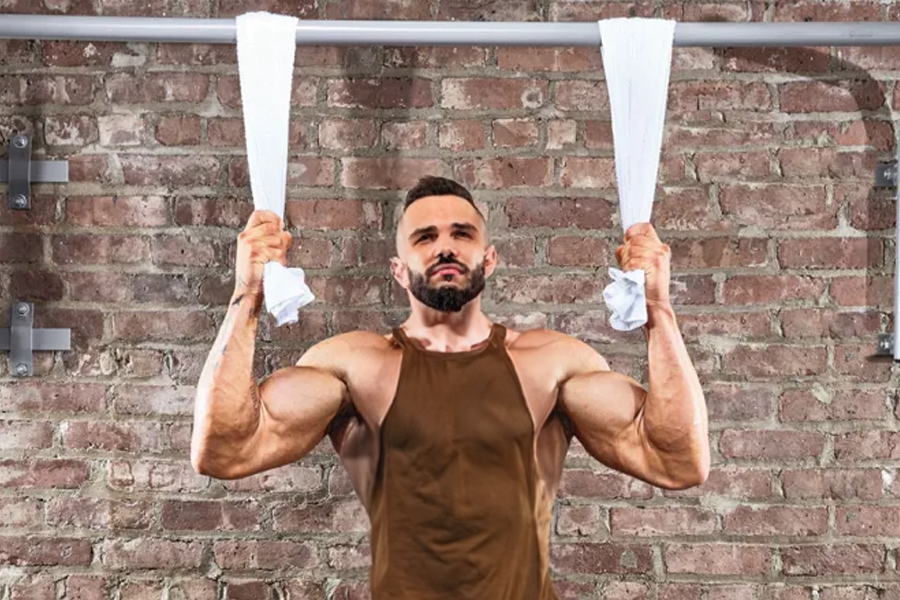
The towel grip dead hang is a serious grip-building variation. By holding towels instead of a bar, you create an intense challenge for your forearms and hands. It’s especially beneficial for athletes who need powerful grip strength, like grapplers or rock climbers.
This variation differs from the rest by focusing almost entirely on grip endurance. It also strengthens the smaller stabilizing muscles in your wrists. Over time, it builds unmatched hand strength and control.
How to Perform Towel Grip Dead Hang:
- Loop two towels over a pull-up bar.
- Grip each towel tightly with both hands.
- Hang with arms straight and feet off the ground.
- Keep your core engaged and shoulders stable.
- Hold for time, then rest and repeat.
FAQs
1. Does hanging help with back pain?
Dead hangs are an unexpectedly helpful practice.
You can reduce back pain and stress by allowing your spine to decompress for short periods between overhead lifts and squats.
2. Why do dead hangs hurt?
Dead hangs can be painful for several reasons, such as straining the tendons and ligaments in your hands and wrists, performing them with poor form, or using too much weight.
3. Can you do dead hangs every day?
It is not advised to do dead hangs daily. Two to three times per week is recommended.
However, there are many advantages, including flexibility and strength gains, so exercising in moderation is crucial.
4. Do dead hangs build muscle?
Yes, the active dead hang can add mass to your biceps, triceps, shoulders, glutes, quadriceps, hamstrings, core, and back, making it a great supplement for a full-body workout.
5. How can you hang on a bar for a long time?
Some techniques can help you hang on a bar longer, such as using a fat bar grip for better support and practicing dead hangs regularly to build stamina.
6. What do dead hangs work?
Dead hangs target your forearms, hands, shoulders, lats, upper back, and core. They also improve grip strength and spinal health.
7. Do dead hangs make you taller?
Dead hangs do not make you taller permanently. However, they can help decompress your spine, improving posture and making you appear slightly taller.
8. Are dead hangs good for you?
Yes, dead hangs are highly beneficial. They improve grip strength, posture, spinal health, and upper-body endurance while reducing back tension.
9. Do dead hangs build muscle?
Yes, especially active dead hangs. They help strengthen and add definition to your shoulders, lats, arms, and core muscles.
10. What are dead hangs good for?
Dead hangs are great for enhancing grip strength, stretching the upper body, decompressing the spine, improving posture, and building overall upper-body stability.
Conclusion
Dead hangs may look simple, but their impact on strength, posture, and overall fitness is undeniable. By targeting your grip, core, and upper-body muscles, they offer a powerful way to improve stability and reduce the risk of injuries.
Whether you're a beginner or an advanced athlete, adding dead hangs and their variations to your routine can unlock serious benefits. Start small, focus on proper form, and progress gradually. With consistency, this straightforward exercise can help you build a stronger foundation for your training and daily life. Grab a bar, hang on, and feel the difference in your body.
Reading List
10 Best Pulling Exercises for Building Muscle & Strength
Here's How You Can Fix Rib Flaring Posture Imbalance
Best Pull-Day Workout: Amazing Pull Exercises Explained By Trainers
Here are 8 Explosive Pull-Up Bar Exercises You Can't Miss!
How to Strengthen Grip — Best Exercises to Improve Your Grip Strength & Wrist Mobility












